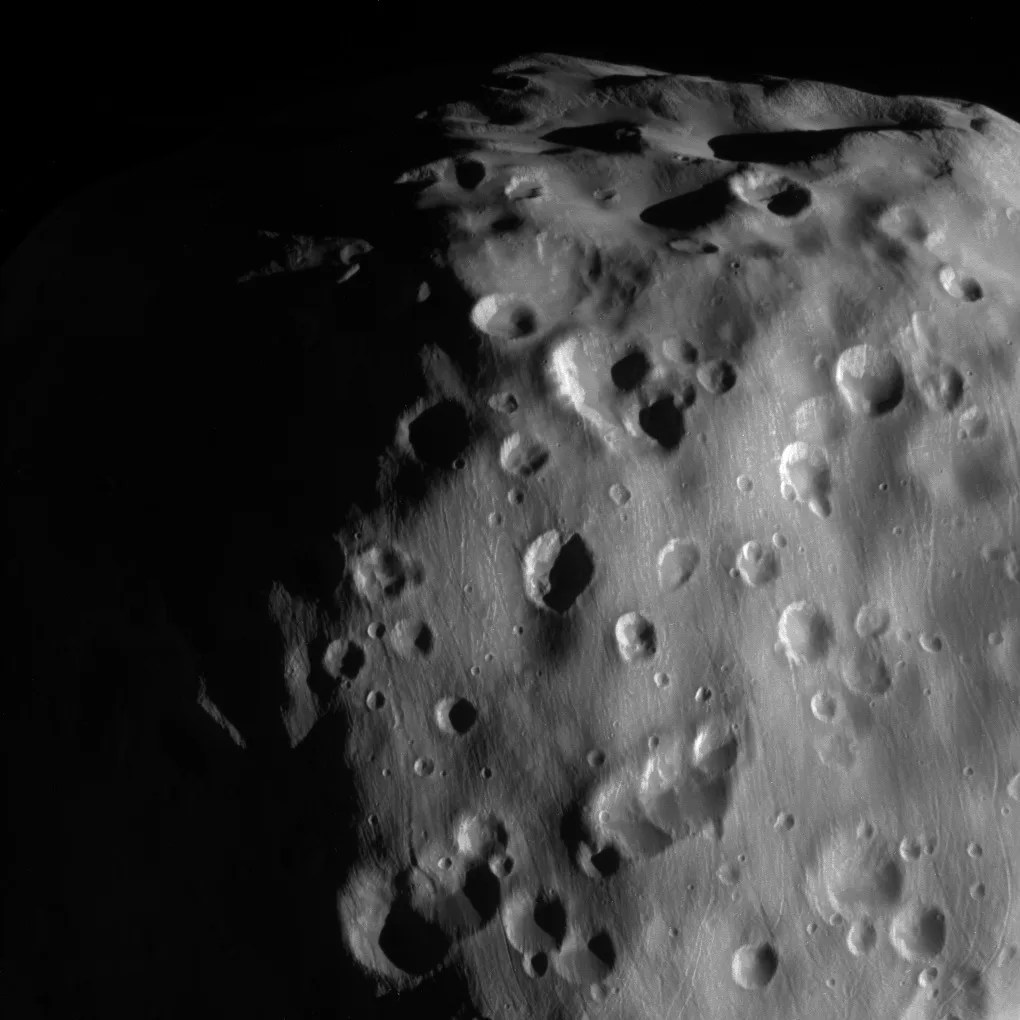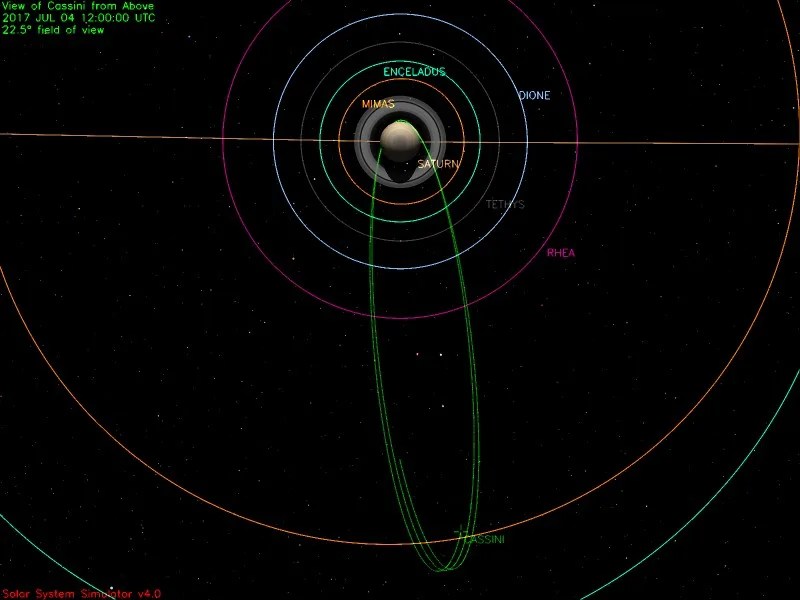4 min read

Many, but not all, members of the Cassini Flight Team in the U.S. were able to take a few days off during a weekend combined with a Fourth-of-July holiday. The spacecraft cooperated, and offered no surprise problems that might have interrupted the chance to relax. Rather, as usual, Cassini continued running its sequence of stored commands, turning to point its instruments, collecting science data, and participating in regular communications and tracking sessions with the Deep Space Network (DSN). In accordance with the holiday-break schedule, no day-by-day description of events is included in this report, but will resume for the following week.
Cassini used its telescope-based remote-sensing instruments, as well as its direct-sensing, in-situ instruments again this week to study the Saturn system. As before, targets included the planet, its rings, its largest moon Titan, and the small irregular moon named Bebhionn.
On Thursday June 29 (DOY 180), the spacecraft made its eleventh high-velocity plunge along the narrow, prescribed corridor between rings and planet. This went nominally, bringing the 22 Grand Finale Proximal Orbits halfway to their end. This passage was the one that team members had re-designed in close to real time, to provide the Cosmic Dust Analyzer (CDA) a better chance of collecting good samples of ring material. Originally, the plan was for Cassini's High-Gain Antenna dish (HGA) to face the oncoming dust, to shield the rest of the spacecraft from stray D-ring particles. But since Cassini's previous passages had revealed a benign dust environment, Project Management decided to relax the HGA-shielding-attitude requirement this time. Since it’s not likely that any other spacecraft will ever be sent to this location again, the team put in the extra effort to ensure the very best shot at sampling Saturn's rings with the direct-sensing science instruments.
Saturday, July 1 was the 13th anniversary of Saturn Orbit Insertion, when Cassini fired its main engine in 2004 to become trapped in orbit about Saturn.
Features on the Cassini website this week included:
• A look back at Cassini's launch in 1997: /news/13076/launching-cassini-leaves-legacy-of-lasting-pride.
• An extraordinarily close view of Saturn's small moon Epimetheus, which shares its orbit with the moon Janus just outside the main rings: /resources/17700.
• Pictures and video clips of many of Cassini flight team members: /resources/17696.
• A look at three of the moons that orbit within Saturn's ring system: /resources/17695/?category=images.
The DSN communicated with and tracked Cassini on eight occasions this week, using stations in California, Spain, and Australia. A total of 13,323 individual commands were uplinked, and about 1,385 megabytes of science and engineering telemetry data were downlinked and captured at rates as high as 142,201 bits per second.
Wrap up:
Cassini is executing its set of 22 Grand Finale Proximal orbits, which have a period of 6.5 days, in a plane inclined 61.9 degrees from the planet's equatorial plane. Each orbit stretches out to an apoapsis altitude of about 1,272,000 km from Saturn, where the spacecraft's planet-relative speed is around 6,000 km/hr. At periapsis, the distance shrinks to about 2,500 km above Saturn's visible atmosphere (by comparison, Saturn is about 120,660 km in diameter), and the speed is around 123,000 km/hr.
The most recent spacecraft tracking and telemetry data were obtained on July 5 using the 70-meter diameter DSN station in Australia. The spacecraft continues to be in an excellent state of health with all of its subsystems operating normally except for the instrument issues described at http://saturn.jpl.nasa.gov/anomalies.
The countdown clock in Mission Control shows 79 days until the end of the Mission.
------------------------
This page offers all the details of the Mission's ending: <https://saturn.jpl.nasa.gov/mission/grand-finale/overview/>
------------------------
Milestones spanning the whole orbital tour are listed here:
<https://saturn.jpl.nasa.gov/mission/saturn-tour/tour-dates/>
------------------------
Information on the present position and speed of the Cassini spacecraft may be found on the "Present Position" page at:
<https://saturn.jpl.nasa.gov/mission/saturn-tour/where-is-cassini-now/>
------------------------
To unsubscribe from Cassini Spacecraft Updates or to subscribe with a different email address, visit:
<http://saturn.jpl.nasa.gov/news/mailinglistsignup/>
------------------------
For comments and questions, please contact Cassini Public Engagement at:
<http://saturn.jpl.nasa.gov/feedback/>
------------------------
This illustration shows Cassini's path up to mid-day July 4.








